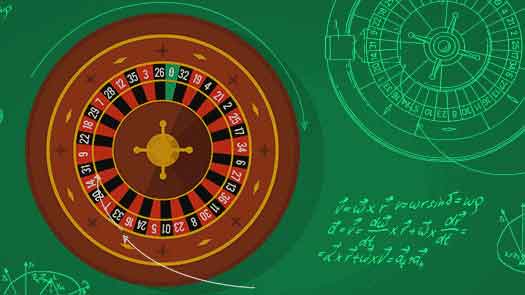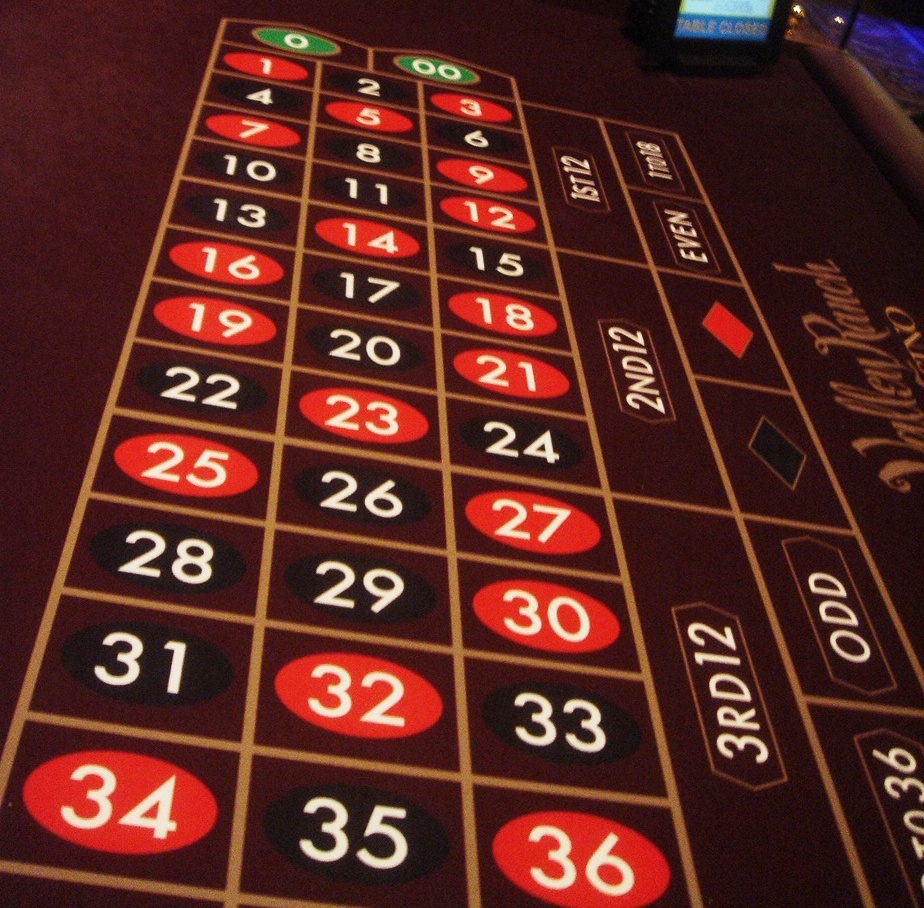- Roulette Systems That Work 70% Win
- Best Way To Win Roulette
- Ways To Win Roulette Machines Real Money
- Ways To Win Roulette Machines Machine
- Best System To Win Roulette
- Best Strategy To Win Roulette
For as long as gamblers have wagered money on games of chance and skill, the temptation to cheat has loomed.
Unwilling to let fate decide, casino cheaters use creative and unscrupulous tricks to gain an unfair edge over the house.
Most roulette machines are programmed in a way that the player will lose during a certain cycle and given a chance to win in another, thus the label fixed odds. One can then say that these FOBTs are not entirely random and as such, many sought to learn how to beat roulette machines.
Among the earliest methods employed by poker cheats, the gunslinging poker games of the Old West era saw cheats wield aces up their sleeves. These days, cheaters who plague poker can be found in both brick and mortar card rooms and online sites, colluding or dumping chips to team up on unsuspecting opponents.
- The roulette tips to win we will be sharing here work with either so you can count these as online roulette tips and tricks too. One very important point you should understand right from the start though is that even if you become some sort of roulette expert, the house will always end up winning most of the time!
- The only way to beat roulette is by understanding the physics of the roulette wheel. This will enable you to determine what patterns are likely to form, how to represent such patterns in a practical form, and how to apply the knowledge.
Cheating in modern casinos predominantly afflicts the skill-based games like poker and blackjack, but you’d be surprised by how prevalent the crime has become in roulette and other games of chance. You wouldn’t think a simple wheel-spinning affair like roulette would be subject to cheating because players don’t really have any influence on the gameplay.
Nonetheless, cheats can be found anywhere real money is being wagered, and the roulette table is no exception. Even with the ever-present “eye in the sky” watching their every move, and eagle-eyed croupiers (dealers), pit bosses, and other staff members trained to detect malfeasance, roulette cheaters just can’t help themselves.
The allure of making easy money without incurring risk certainly makes sense, but trying to cheat the casino while playing roulette is a fool’s errand. Don’t take my word for it though, just ask the long lineup of convicted roulette criminals who tried the five ways to cheat at roulette listed below.
1 – Past Posting or Late Betting to Increase Wagers on Known Winners
Every roulette player knows the feeling well…
When you nail the number perfectly and watch the croupier stack the 35 to 1 payout, wishing you would’ve bet $10 instead of $1, the experience can be bittersweet to say the least. Beating long odds for a big payout is always cause for celebration, but when you only bet a few bucks, it can be easy to kick yourself for not putting more out there.
Some roulette cheaters aren’t content with their minimal payouts, so they resort to a tactic popularly referred to as “past posting.” Also known as “late betting,” the concept of past posting is quite basic on the surface. You add chips to your bet once you know it’s a winner.
When the croupier watches the wheel to find out where the ball landed, it will take them a split second to scan the spaces, find the ball, and turn their eyes back to the table before calling the number. In that split second, past posting artists use sleight of hand tricks to secretly add significant sums to their winning bet.
Let’s say you sprinkled various bets between $5 and $40 on several single-number spaces, using combinations of both the red $5 and green $25 chips. You have the number 17 covered with one $5 chip, but when you see the ball nestle into the 17 space, you instantly dart your hand out and cap the $5 bet with a $25 chip. The croupier never notices your trickery, and just like that, you’ve turned a $175 payout (35 to 1) on $5 into a whopping $1,050.
Why You Shouldn’t Try Past Posting
While potentially lucrative when undetected, past posting is inherently dangerous based on the moving parts in play.
A professional croupier is trained to scan and memorize the bets in play when they wave for final wagers, so they might notice your small chips suddenly transforming into big ones. While you’re watching the croupier, a nearby pit boss outside of your peripheral vision might see you make the switch. And up above, high-resolution cameras are recording every move you make.
Add it all up, and past posting just isn’t worth the risk involved, a fact Charbel Tannous and Constandi Lubbat can attest to. In 2011, while playing roulette at L’Auberge du Lac Casino Resort in Louisiana, the pair were caught red-handed past posting for big money.
After authorities used surveillance footage to confirm that over $175,000 was stolen via the roulette scheme, Tannous and Lubbat were charged with felony cheating and swindling over $1,500 and criminal conspiracy.
Tannous was eventually convicted and sentenced to 37 months in federal prison for organizing the roulette racket. This is a harsh punishment US Attorney Stephanie Finley made clear will be the norm for casino cheats:

“We are very pleased with the court’s decision to give this defendant a significant prison term. The casino and the citizens were victims in this case. A portion of the profits from the casino goes to the State of Louisiana and the Calcasieu Parish School Board.
We will continue to partner with our local, state, and federal law enforcement partners to prosecute crimes of this nature and seek the maximum amount of prison time available.”

2 – Partnering With a Croupier to Produce Fake Winners
If you read the previously linked reporting, you know Tannous and Lubbat didn’t work alone.
By conspiring with two croupiers working at the casino, these cheats made sure their past posting antics would never be reported.
That approach certainly makes sense on an objective level, too. By doubling down on the scam, colluding to ensure their cheating is allowed by the people running the table, conspirators don’t leave anything to chance. Having an “inside man” on the team only makes cheating at roulette that much easier, as a corrupt croupier can allow their partner to inflate winning bets or pull back chips on losers.
Why You Shouldn’t Partner With a Dealer
In 2016, a casino pit boss at the Horseshoe Casino in Council Bluffs, Iowa, decided to go rogue. He enlisted a croupier to do the dirty deed, and a third partner to act the part of lucky player. Past posting provided the bulk of the team’s $20,000 in ill-gotten gains, but like almost all roulette cheats before them, these three were eventually caught on camera and arrested.
Roulette Systems That Work 70% Win
David Dales, a special agent with the Iowa Division of Criminal Investigation (IDCI), issued a statement explaining how the scam was set up:
“There was a dealer that was doing some active cheating mechanism on the roulette table at Horseshoe Casino. And there was a patron he was consistently cheating for. The allegations are they were past posting – adding chips to the winning numbers – doing other activities that gave them illegal winnings at a table game.”
The offenders were charged with four felonies, including ongoing criminal conduct, first-degree theft, conspiracy, and cheating at gambling. They faced significant jail time and hefty fines.
3 – “Coloring up” Small Chips for Higher Denominations off the Table Before Cashing Out
An especially clever way roulette players can cheat the game involves the old bait and switch.
To make the “color up” scheme work, two players working in tandem start by sitting at different tables. In roulette, cash is turned into specially designed chips that are only good at the table. To avoid confusion between different players betting, everyone gets a different color chip in the denomination of their choosing.
A color up team moves from table to table, one buying in for the minimum $1 chips, and the other going bigger with a $25 or $100 denomination. When they both receive the same color chips, they’re always at a different table and only six or seven colors are in play so this will inevitably occur, the trap is sprung.
The low stakes player pockets a handful of chips on the sly, then heads off to take a quick bathroom break. With no surveillance cameras to worry about, they wait for their partner to hit the head as well, then they deliver a handful of chips when nobody’s around.
Flush with new chips in the same color as those at the big stakes table, the second player proceeds to play a spin or two with minimal action before requesting a color up and cash out.
When cheaters turn 10 of the $1 chips into an equivalent amount of $25 chips, they’ve instantly “earned” $240 in profit without incurring an ounce of risk. And if a $1 to $100 exchange rate is in play, the color up scam produces a massive $990 profit margin.
Why You Shouldn’t Color up Chips
Between 2012 and 2013, a highly organized team of color up cheaters based in New York toured the country targeting small commercial and tribal casinos. Their run came to an end in Ohio, after the team struck at four casinos and stole thousands of dollars, only for 13 members to find themselves behind bars when it was all said and done.
Karen Huey, director of enforcement for the Ohio Casino Control Commission (OCCC), told local media outlets that the Buckeye State was not alone:
“This is a very organized group of about 70 people. They travel the country. They’ve been identified in 18 states running this scam.”
The roulette cheating team wound up facing 29 felony counts and the possibility of lengthy prison sentences. According to Lucas County Prosecutor’s Office Special Units Division Chief John Weglian, casino criminals will never receive leniency.
“One of the principle purposes of these casinos is to provide revenue to the State of Ohio so the laws that the legislature has passed cover casino violations will be enforced strictly by the Attorney General’s office and this office. We will enforce the laws of the state.”

4 – Using Hidden Lasers to Measure Ball Speed Before Betting Concludes
These last two are so absurd that they hardly merit mention, but based on their scientific innovations alone, they made the cut.
Back in the 1970s, a physicist at the Santa Fe Institute in New Mexico named Norman Packard postulated that laser beams could be used to measure crucial roulette variables. By using a laser and a computer to chart the ball and wheel speed, Packard succeeded in predicting which quadrant of the wheel the ball would land in.
Here’s how he described the gambit in an interview with New Scientist:

“In the best circumstances, we could predict the quadrant correctly. Even saying which half of the wheel is extremely powerful because the payoff is so good. We definitely got to the point where we were winning money, but we didn’t continue long enough to make large amounts.”
Why You Shouldn’t Use Technology to Cheat
Obviously, pulling out a laser pointer and hiding a computer on your person is impractical in the modern casino setting. Maybe the laser cheat works in a laboratory, or even an old-school gambling hall before cameras became prevalent, but this is a method of cheating at roulette that would never fly nowadays.
5 – Directing the Ball to Certain Spaces by Generating a Magnetic Field
Best Way To Win Roulette
Using a laser pointer and a computer isn’t the most discreet way to cheat at roulette. So, how about a magnetic roulette ball to improve your odds?
In the early 2000s, a team of Austrian roulette cheats found a way to activate magnetic fields that drew the ball to certain numbers based on where the player stood. While the team didn’t win on every single spin, the use of a remote-controlled ball helped them improve their chances of winning.
Why You Shouldn’t Use Magnets
Unfortunately for this team of conmen, the croupier eventually found the ball stuck to his cufflink. The jig was up, forcing the cheaters to abandon their winnings and run away in shame. Today, some casinos use magnetic field sensors to prevent this from happening.
Conclusion
Folks who feel the need to cheat at roulette represent the bottom of the barrel when it comes to casino gambling. Desperate and down on their luck, yet unwilling to simply learn a skill game and play it well, roulette cheats refuse to accept reality. And as the five entries above should show you, the run of free money always ends at some point, leaving prison, probation, and a ruined reputation as the roulette cheater’s only legacy.
Please enable JavaScript to view the comments powered by Disqus.Ways To Win Roulette Machines Real Money
Roulette is a two hundred year old gambling sport. It has been played by countless generations and changed over time, adapting to various cultural changes and technological innovations. A product of such changes that we can see today is the fact that roulette can be played over different media. By default, we can play the game in live casinos, but we also have alternatives like online and TV roulette. There are also the bookies’ roulette machines.
Ways To Win Roulette Machines Machine
Roulette FOBTs
Roulette machines found in bookmaker-run betting shops are also known as fixed odds betting terminals or FOBT for a good reason. These machines do not follow the standard casino odds, but instead had their probabilities adjusted such that they’d favor the dealer. In the end, they are always designed to turn in bigger profits to the betting shop than standard casino roulette would.
Most roulette machines are programmed in a way that the player will lose during a certain cycle and given a chance to win in another, thus the label fixed odds. One can then say that these FOBTs are not entirely random and as such, many sought to learn how to beat roulette machines.
The “Sharking” Method

Best System To Win Roulette
One method to win against the roulette machine is called sharking. In this technique, you basically observe a gambler on that particular machine. Notice the pattern of wins and losses so you’ll know when and where to bet. Soon after determining when the winning cycle is, you take over as the “shark” and nab the wins.
Before getting into the arduous observation process, you first have to look for the right machine, and by “right”, we mean one that can be easily exploited. The first thing you have to look for in a roulette machine are repeated results, to get an idea of which space or section you should bet on. Next, you should observe players for consistent losses, which indicates that the player has just entered the cycle where he or she is intended to lose. Once you’ve seen the same player finally win, take over the machine and get “lucky”. Also, you have to see which machine acts up time and again. Broken or aged machines are more predictable, as they’re prone to slowing down.
However, the observation process can be very tricky. You have to carry it out without being suspected of sharking, lest you run the risk of getting kicked out of the betting shop. As such, learn how to blend in and most importantly, multi-task. Pretend to be playing something else, particularly on a different machine overlooking your target FOBT. Notice the behavior of that machine’s bettors and once you find one lose constantly then just leave, don’t immediately hop in. Wait for a few minutes before “randomly” taking over the machine and bagging the subsequent wins.
Best Strategy To Win Roulette
Sharking is just one of those methods on that answers the question, “How to beat a roulette machine?” This article is vague at best on this, as it’s meant to define the method rather than teach it. If you’re looking for a more detailed explanation of sharking and other methods to win at roulette machines, you may either wait for our future write ups or find one elsewhere in the Internet. Until then.